This website uses cookies as well as similar tools and technologies to understand visitors’ experiences. By continuing to use this website, you consent to Columbia University’s usage of cookies and similar technologies, in accordance with the Columbia University Website Cookie Notice.
Guest
Rob Gramlich
Founder and President, Grid Strategies
-
Transcript
-
Rob Gramlich: The regional planning rule, I think is the single most important transmission policy in the last decade, and one of the bigger energy policies in the last decade, certainly the biggest since the Inflation Reduction Act.
Bill Loveless: May is shaping up to be a monumental month for transmission policy reform in the United States. On May 8th, the Department of Energy proposed 10 national interest electric transmission [inaudible 00:00:29], a designation that allows the federal government to accelerate projects in areas where consumers are harmed by lack of transmission. And just days later, on the 13th, the Federal Energy Regulatory Commission released orders 1920 and 1977. Both of the new rules aim to expedite the build-out of the nation’s electric grid by tackling major issues, such as cost allocation and long-term planning. So, how will these actions from the federal government impact transmission projects? What are the critics of the FERC rules saying? And why are these long-awaited reforms happening now?
This is Columbia Energy Exchange, the weekly podcast from the Center on Global Energy Policy at Columbia University. I’m Bill Loveless. Today on the show, Rob Gramlich. Rob is the founder and president of Grid Strategies, a consulting firm focused on transmission and power markets. He has co-founded multiple organizations focused on power systems, reliability and sustainability, including the Americans for a Clean Energy Grid, and the Working for Advanced Transmission Technologies Coalition. From 2001 to 2005, Rob served as an economic advisor to FERC Chairman Pat Wood. I talked with Rob about the history of transmission regulation, and why the FERC and DOE want to reform the permitting process. We dissected order 1920 and order 1977, and the impacts they will have on current and future transmission projects. I hope you enjoy our conversation. Rob Gramlich, welcome to Columbia Energy Exchange.
Rob Gramlich: Thanks, Bill. Great to be here.
Bill Loveless: So, Rob, your career has been varied, and today you run Grid Strategies, you were the founder of that consulting group, in addition, you founded, or co-founder, of the Americans for a Clean Energy Grid, and the Watt Coalition. But before that, you were an advisor to former FERC Chairman Pat Wood, an official with the American Wind Energy Association, as it was then called, and a senior economist at PJM Interconnection, also a senior associate at the PG&E National Energy Group. All told you have some 25 years of experience in electric power markets and policy, what insight have these different experiences given you on energy issues today?
Rob Gramlich: Sure, Bill. Well, you and I used to talk, starting I think 20 years ago, in some of that, when I was at FERC, and you were in this electricity industry media space, and I think we’ve both seen a lot of the evolution. There were a lot of changes back in the late 90s with restructuring, restructuring a 200 billion-a-year industry was not a small thing. And so, some pretty heady issues, and I think we all got some scars, we learned a lot, and this complicated industry, with our regulatory structure, federal state, and I think mostly just constantly trying to figure out solutions to solve problems, whether it’s creating competitive markets then, or integrating clean energy, and dealing with the severe weather situations on the grid these days, it’s just really important work. And so, that many years of working through it, and developing relationships I think has really been a great experience.
Bill Loveless: And of course, the issues have changed to some extent over the years, but I think an overlying issue has been the need for restructuring of the electric power sector, for example, despite the different challenges that may have been evident at any given time.
Rob Gramlich: Yeah, exactly. Well, and you and I have been through different partisan cycles, issues bounce back and forth between parties. It was Republicans leading all the federal transmission initiatives back 20 years ago, and now it seems to be Democrats, and Republicans are, I think for that reason, pretty shy about it. But the more you live through these cycles, I think you’re able to sort of imagine how things could be different from the present. And we’ve also learned a lot about what can change, and what are the immobile objects in the industry. And so, at any rate, we live and learn.
Bill Loveless: Well, the issue today is transmission, and for listeners who don’t live in the United States, Rob, and for some who do, explain how decisions on long-distance transmission are made in this country.
Rob Gramlich: Sure. Well, the place to start is the industry that we inherited, it was 3000 utilities, who were focused on serving their local load, with mostly local generation. And then, in the 70s and 80s, after some blackouts and things, they started working on the connections between the utilities, but that was really an afterthought or an additional layer added on later for reliability reasons. And we never fundamentally change the state statutes or the Federal Power Act to create any kind of national grid.
However, with restructuring, and the opportunity for competitive generation markets, which was blessed in principle by Congress in the 1992 Energy Policy Act, I think the industry realized, well, we really need regional markets… The only way to have a competitive market is for generators, one or two or three states away, to compete with each other. So, there was this sort of development of regional markets and open access transmission to enable that type of competition. But again, the institutions never really changed all that much, and so we’re still struggling with how do you invest in and recover costs for multi-state transmission lines with this industry of isolated utility fiefdoms that the industry was structured around.
Bill Loveless: So, these laws, and there have been laws and regulations on the books for years, decades, even, right? Federal Power Act goes back over 100 years. But what you’re saying is they simply are not adequate to enable the timely construction of infrastructure, this type of infrastructure, for example.
Rob Gramlich: I guess I’m mostly saying that it just requires additional work to create the institutions and the processes within this structure. I don’t think fundamental federal power [inaudible 00:07:37] reform is needed or possible, so I don’t have time to worry about that. But because just unreasonable and not unduly discriminatory or preferential, those, you can do a lot within that, and the courts have been gradually affirming and if not expanding conventional interpretations of what that means in terms of federal jurisdiction, certainly over things like transmission planning, which is quite broad under court decisions over the last 10 or 15 years. So, with that authority, now, we need to do two things. We need FERC rules, but also we really need to develop the institutional capability to do it, just decreeing that something should happen isn’t sufficient for it to actually happen. So, that’s where we are, I’m sure we’ll talk about recent FERC rulings, and those are generally good and strong, in my opinion, but we also have a lot of work to do to develop these regional institutions and practices.
Bill Loveless: Before we get to those FERC rules, Rob, tell us how badly is the need for new transmission in the United States?
Rob Gramlich: Well, it’s very bad, the need is great, and we’re seeing it from a lot of different perspectives. The thing about a huge shared network that underlies almost everything we do in modern life at home and at work is that you have interests from a variety of parts of society and the economy, who say, wow, we really need this thing, and we need it to work well. So, for example, just starting with resilience and severe weather, what most people don’t see or appreciate is that when we get these, either it’s a polar vortex, or a heat dome, or you name it, that can really stress the generation fleet, and every type of generation is vulnerable to some type of weather. Well, what happens is we end up moving 10 or 15 gigawatts of power from one region to the next, because the grid is bigger than the weather.
And if we make it so through interregional transmission, then we have a much more robust and resilient grid. So, that’s the reliability need, and of course, increasingly frequent severe weather causes that, brings that to the fore. Completely separately, we have mostly 50, 60+ year old assets in this industry, and that one’s also not widely appreciate, and it’s really challenging for people like me, personally, who are trying to identify the need to expand the grid, because we need a lot of money invested just to keep the grid in good shape. So, there’s a lot of utility spending on transmission, and then consumer groups and regulators say, wait a minute, we’re already spending all this money and our transmission part of our bill’s going up, and we have to say, yes, that’s true, but also we need to expand it, none of those dollars are actually expanding capacity.
So, that’s really tough in the regulatory context. Then, thirdly, we’ve had over the last five or 10 years, this energy transition happening, and that’s all the new generation sources that are mostly not located at the place where the grid goes, so we need a lot of connections. Moreover, the type of resources that we have, largely wind and solar, are the type where they’re always operating at different times. So, the way to make a reliable affordable system is to integrate wind and solar farms across multi-hundred mile spans of regions, and then, by doing that you have an overall more steady supply of it. So, we have to, for those reasons, renewable energy and grid expansion go hand in hand, there’s no transition without transmission. And then, fourthly, now we have this load growth, which, six or nine months ago, barely anybody was paying attention to, but it’s extraordinary the amount of power demand.
Bill Loveless: Yeah, oh yeah, and the numbers are staggering. I was reading a report from the National Renewable Energy Laboratory, that said, under moderate to high load growth scenarios, the US may need to more than double its transmission capacity by 2035, and potentially triple it by 2050.
Rob Gramlich: That’s right. And it’s an extraordinary amount of transmission need, but again, it is for all those purposes. So, I’m hopeful that parties can come together from different perspectives, different industries, different political stripes, to help work on our shared network.
Bill Loveless: In the face of these obstacles, the Federal Energy Regulatory Commission has approved two rules to amend to jumpstart new transmission in the United States. They’re considered to be the most significant actions by the FERC on this topic, in this century, the most prominent of the two, the so-called Order 1920, it runs what? Over a thousand pages long, really gets at this. Explain in simple terms what this rule would do, Rob.
Rob Gramlich: Very simply, the 1300-page rule will require all transmission providers, which are utilities, basically, to proactively plan 20 years out for the anticipated future resource mix and load, with the best available information. And choose the transmission portfolio that is best for consumers. i.e. maximizes net benefits. And that’s simply what it does. Now, most people would say, wait a minute, I thought there already were transmission planners out there, isn’t that what they already do?
Bill Loveless: Right.
Rob Gramlich: And you would be right to think so, but the reality is, for a variety of reasons, it just hasn’t been happening in most of the country. We did a report card on transmission planning practices, and found barely anybody was above a C, some were in the F range. And these are not rocket science methodologies, take into account the best information that’s available on generation and load, and plan for multiple purposes, like reliability and economics, and do scenarios, because you could have severe weather or other situations where you might have high or low load growth.
So, these are just sort of simple planning practices that you almost, if you knew nothing about transmission planning, you might just guess that, oh, this is how one would do it, and so they basically are common sense practices. The idea is they need to do it because they haven’t been doing it, and there’s probably some institutional reasons why it hasn’t been done, and there is probably some stakeholder incentives who are resistant to doing it. So, for whatever reason, it’s very helpful for the regulator to say, hey, this is what you need to do, now everybody needs to comply with these basic common sense rules, and show us how you’re doing it.
Bill Loveless: What’s kept FERC from implementing these, what you call, common sense rules in the past?
Rob Gramlich: Well, FERC does have a lot of jobs, so we haven’t had just the alignment of all of the information and processes and FERC staff capability to process this. Order 1000 was the attempt, 13 years ago, to try to do this, and it took a little time for the consensus to be, oh, that didn’t really work. And for example, I was slow to reach that conclusion, because I was a big proponent of most of what was in Order 1000. But it became clear by 2018/19/20, that that really wasn’t working, but then it takes a while to get all the consensus. And there was a lot of consensus. So, Chairman Glick came in, he opened up a proceeding, hundreds of utilities and consumer interests said, yeah, we really need to do this proactive planning.
So, there really was broad consensus on the general focus of it, but of course, there are a million details, and the 1300 pages and the 30,000 pages of record evidence, all the documents filed by various parties, reflect the complexity of all the details in there, and so it takes a while, it took three years to get through that full process. And you could ask former Chairman, Neil Chatterjee is out saying, he would’ve done this had he had the time, but they had a bunch of other stuff that was midstream on their plate, that they had to finish up. So, knowing that this is a multi-year process, he didn’t really have the time to do it. So, they did undertake it three years ago, and they just finished.
Bill Loveless: And of course, as you note those, Chairman Glick was a Democrat, Chatterjee was a Republican, so there’s been agreement on both sides of the political aisle on this. One of the things that makes it so complicated, it seems to me, is just the complexity of the grid. There really is not just a grid in the United States, as we know, it’s several grids. And then, plus, you have these grid operators, these sprawling operations, like the 13-state PJM interconnection, based in Pennsylvania, the 15-state mid-continent independent system operator, the Pacific Northwest, you have Bonneville Power Administration, which goes back to the FDR and the new deal, and then New York and California operate their own networks, and finally, in the Southeast, you have these dominant utilities that manage both power supplies and flow. So, it’s a complicated system, if you want to call it that, across the United States. And probably makes it, I’m sure, makes it very difficult to come up with what, again, you refer to as common sense rules for the entire country.
Rob Gramlich: Very complicated. Each region has its own flavor, so it’s always a challenge, that’s always the hard part about FERC rules, is how do you do something that’s for the benefit of all, that also makes sense in each region. I do think there are ways, I think the commission did a lot of work to figure out what are the common elements here, and the basic thrust of proactive planning for the long-term, done as much on a regional basis as possible, and then the cost allocation, we’ll probably get into that, but that’s usually where the rubber hits the road, and where the debates, and lawyers, guns, and money come out.
But the rule simply said, beneficiary pays, and of course it did, because that’s what the courts have said the law of the land is. So, it’s just each region has to do that, and FERC did, which should be the non-controversial thing, of saying, well, and those benefits are just reliability and economic benefits, we’re not saying clean energy, climate renewable, other things, like they maybe could have or should have, but they didn’t. So, it should have been received as right down the fairway, middle of the road, non-partisan, of course, this is 2024, so nothing is ever… That doesn’t tend to happen.
Bill Loveless: Yeah, that’s been one of the biggest sticking points, is how to pay for this transmission, huge disputes have occurred among states, among utilities, over exactly where those costs should fall.
Rob Gramlich: That’s always the hardest part, in my opinion, the three barriers to transmission I generally describe as the three Ps, planning, permitting, and paying. And the paying part is the cost allocation, and that’s really the hardest one. Because we’re talking about a shared public good that benefits everybody. Let’s say you did a whole region-wide plan for the Western interconnect, and built out some probably long lines from the interior West, western plains, to the coast, as well as North-South, for all the resource sharing that they could do or expand on, there are beneficiaries across the whole region, but that’s always hard to do, and with a public good, the incentive is always for individuals to try to say, no, I shouldn’t pay that much, somebody else should pay more.
So, it’s sort of like, if you had the option on your tax return to say, no, I would like to not spend my tax money on national defense this year, please charge me only half as much for taxes, everybody would do that. Even if they’re strong pro-military families because that’s just your incentive, is to let somebody else pay for the public good. So, same way in transmission, everybody’s incentive is to try to have somebody else pay for it. But that’s why we have economic regulators, that’s a core function of FERC, and so it’s good to see that they’re acting.
Bill Loveless: Yeah. Well, the complaint is often, if the lines are crossing above my head across my state, to bring power to another region, I’m not really getting much in the way of benefits for that, so why should I support it?
Rob Gramlich: Well, but that can be measured. So, you can determine who’s getting the benefit, and there are also these negotiation processes set up in the rule for states to work together to come to an agreement. So, there are certainly instances where a transmission line would get planned, and it might be optimal for the region, but one state doesn’t get any lower cost power out of it, and so that’s the type of thing that FERC’s reliability and economic benefits are supposed to account for.
Bill Loveless: And you think they may?
Rob Gramlich: Well, that’s now the rule, that’s what Order 1920 says. And I also think, again, this was such a straight down the fairway determination of reliability and economic benefits, again, as opposed to the triggering and controversial climate clean energy benefits, that there shouldn’t be that much argument in principle, in fact, I don’t even think there’s all that much for people to do in terms of, okay, what’s our region X cost allocation policy? Well, the policy is beneficiary pays, and the benefits are these reliability and economic benefits. So, just, basically, you should just comply with FERC, saying, yep, that’s what we’re doing. Now, when you get to the actual plan, you have to develop a transmission plan, then you have to do this quantification and the measurement. And it might find that, let’s say you did one for New England, you might find that four out of the six states get significant benefit, and two don’t, well, the policy allows for the cost allocation to reflect that it could be different.
Now, they might also just say, well, we’re not going to get that fine-grained in our policy, we’re just going to spread it around because one state will win in one plan, and the next state will win in the next plan, they’re allowed to do that, as long as it’s roughly commensurate with beneficiary pays. So, again, I don’t see why there should be much debate in principle, and what’s region X’s cost allocation plan, but there’s always going to be devil in the details of a given plan, and the analysis, our modeling tools are not perfect, for example. So, everybody’s going to always, I’m sure, argue about the details, and then you’ll probably have a FERC proceeding to sort that out, that’s again what regulators do.
Bill Loveless: There was debate at the commission over this rule, the order passed on a two-one vote of the commission, with the two Democrats, Willie Phillips and Alison Clements approving it, and the panel’s one Republican, Mark Christie, turning it down. Christie called it a, “Pretext to enact through administrative action, a sweeping legislative and policy agenda that Congress never passed.” We’ve heard those sorts of arguments that echoed in the past, by opponents of regulations proposed by the Biden administration, and before that, the Obama administration, what sort of signals does that send out to the market, to the grid operators?
Rob Gramlich: Yeah, it’s unfortunate that it had to be non-unanimous and also happened to be that it was party line, that the individuals have party affiliations attached to their name, but I don’t think that reflects party differences. And the thing about regulatory policy, when you have five member commissions, especially when there’s actually only three at a given time, is that it’s really just the whatever happens to be the individual views of those three individuals, in great contrast to say, when a law passes and you have 535 members of Congress, no individual’s fingerprints are on it too much. So, I think what happened is each of the three commissioners are very well qualified, very smart, very high integrity, and they’re sticking to their principles. I just think there happened to be a core difference of opinion between the majority and the minority here, Commissioner Christie’s view is that one state should be able to say no, have an opt-out approach, to say, no, I don’t like this plan, I don’t like this cost allocation, so I should be able to not pay.
And my opinion is that’s fundamentally irreconcilable with a meaningful transmission planning rule, how could you ever pay for infrastructure if individual get to opt-out of the whole thing? And I think the majority agreed with the idea that I just said, and said, well, we have to proceed with a meaningful rule here, this is too great a need, “It’s a reliability imperative, and affordability imperative,” as Chairman Phillips said. So, that core issue I think was irreconcilable between the majority and the minority, unfortunately.
And then, once, there’s not going to be agreement on that, I think there’s plenty of other of the details that the minority opts out of participating in the rule, and then probably doesn’t get the rest of what they want. I’m only observing from the outside, but that’s how legislation works. If you want to be part of the coalition, to develop a bill, then you get your imprint on it, if you beg off from the start, then you don’t. So, I think probably the other issues added up in terms of what he didn’t get and came out with that. And there’s probably some frustration there, which leads to the length of the concurrence and the dissent.
Bill Loveless: Right, right. It’s difficult to get a unanimous opinion or anything close to a unanimous opinion in Washington these days. Rob, then there’s the second rule approved by the FERC, the so-called Order 1977, which, while it was overshadowed by the bigger rule, is still very significant. Why is that so?
Rob Gramlich: Yeah. Well, Bill, this is interesting because you and I used to talk about this, and we were involved around the Energy Policy Act of 2005, when that federal backstop siting came in. And that was quite controversial then, as you remember, because having a federal backstop over the siting of transmission, that had always been really just a state function with no federal oversight, that was a big step. You’re right, it didn’t get a lot of attention, and I think there’s a, number one, a recognition that that bottle was fought and won, the proponents of that backstop siting back in 2005, and then again, a couple of years ago in the IIJA, or Bipartisan Infrastructure Law, which strengthened that provision. It has not been the case in the last few years that any FERC commissioner was actively promoting that, or trying to grab authority there, or advocate for that authority, I don’t think even Chairman Glick said a word about it during that legislative process.
So, it’s not like FERC is asking for this, they’re just doing what they’re obligated to do, which is implement what Congress passed. So, for that reason, and moreover, on the one thing that was somewhat controversial in that rule, which is the proposal that there should be… In the proposed rule, they said we should have concurrent FERC work while the states are doing their part of it, the final rule said in response to significant state pushback that, okay, we’ll let the states finish and then we’ll start. So, instead of the simultaneous, they went with the sequential approach, so the states were happy about that, and I think that’s why this one was a three vote, unanimous vote, on implementation of that. And again, Commissioner Christie and the other, Phillips and Clements, I don’t think any of them ever took a position that this authority should exist, or should not exist, it’s just that they’re just implementing the modification to the law.
Bill Loveless: Tell me if I’m wrong here, but as I understand it, that Order 1977 clarifies that the FERC has the authority to issue permits to construct or modify electric transmission facilities in so-called national interest corridors, if a state has denied a siting application.
Rob Gramlich: Right. So, that’s what it does, but again, that’s what the law says, and what the IIJA strengthened and clarified. There were a couple of court decisions from, I think 2007 and 2009, that really fundamentally weakened that provision to the point of making it almost meaningless. And so, for a number of years, Congress has been considering, well, what did we originally intend? And maybe those court decisions really blow up our intention here. And so, the law essentially undid those court decisions to make it actually a meaningful provision, and FERC, well, both DOE and FERC have now acted recently to implement their pieces of that.
Bill Loveless: Yeah. So, do you think now the FERC will in fact take advantage of this authority, and act if a state doesn’t on a transmission line in one of these national critical corridors?
Rob Gramlich: Well, I do think the authority existing matters and the programs being set up at DOE and FERC matter, and it’s likely to help out in the field, it’s always an option to go through the process at DOE and FERC for this. The way these things often work is just having that ability to get the issue resolved enables agreements on the ground, there’s not a single landowner that could block a 500-mile line, and extract whatever they want out of the process. So, I expect landowners will get due compensation. There’s a lot of farmers and ranchers, that’s the main sort of scenario we’re talking about, out in mostly rural parts of the country. And in most cases, there are multiple routes that the developer can say, okay, well, they don’t want it here, but these other landowners are thrilled to take this generous payment, and also access these various DOE funds now available to support communities, and that host transmission lines.
But at the end of the day, this veto power from any single landowner can be resolved now through DOE and FERC, and that’s helpful. It’s also of great interest, I think, to transmission developers and investors, who say, well, that risk is now mitigated, because again, if you’re investing a few hundred million dollars in the development of a transmission line, not the full cost of a line, but just the development and the permitting and all of that, and the landowner lease agreements, that’s a big investment to lay down, and if you have that risk, well, now that risk is somewhat mitigated.
Bill Loveless: So, we discussed this authority from FERC, the clarification of it, recently and now, in these actions that have been taken, speaking of national interest corridors, the US Department of Energy has offered a proposal for areas where new transmission lines are critical. As I understand it, it hasn’t specifically identified them yet, but it provided a broad outline?
Rob Gramlich: Yeah, it did release some, I think they’re called preliminary corridors, that are, there’s lines on maps now that you can go see on the Department of Energy website. But I think they’re in an iterative process here, of macro studies from the labs about important paths and corridors and regional needs, as well as more ground up getting information from parties on the ground, about where a particular corridor may need the help and assistance from this program. And remember, there’s another aspect on the National Interests Electric Transmission Corridor designation by the Department of Energy, which is all of their financing tools. I wish they had more money, but they do have some money to spend on various things, loans, grants, and not just to the project, but to the communities.
And so, when a project gets that NIETC designation, National Interest Electric Transmission Corridor, some of those financing tools are opened up. So, there’s been reason for some of the local interests and project developers to really propose specifics to DOE, and if the local on the ground information matches up with the regional/interregional macro needs assessment, then those seem to be candidates for designation. And it’s not a final designation, again, it’s preliminary, so now these particular proposed designations are out for comment, and parties can give comments to DOE.
Bill Loveless: Yeah. So, it sounds like this could take time for DOE to complete this action, and it would seem therefore that it postpones the effective impacts of the order, the Order 1977, that the FERC just approved.
Rob Gramlich: Yeah, it will take time, I think that’s right. I don’t expect final designations real soon. And then, again, there’s the state process, and then the FERC process. So, I haven’t done the math, but it’s got to be a couple of years before the earliest FERC action would happen.
Bill Loveless: I was going to ask you, will these actions, these new rules from the FERC, plus what DOE is working on, result in approval of badly needed new long-distance transmission lines soon? But I think the answer is probably not, right?
Rob Gramlich: I think that’s right. Look, again, I think we can build a lot of transmission without ever having to get a FERC permit. And that doesn’t mean that that provision is unimportant because just the existence of that authority, in order to resolve an issue, helps, just having that authority exist, and the programs exist. But I think, I don’t know, 90+ % of large long-distance transmission, that we build, if we’re successful in doing that, I think will be done without a FERC permit.
Bill Loveless: So, you think there’s enough incentive, additional incentive, provided by the bigger FERC action, 1920, to help move things forward for long-distance transmission, even in the absence of some final action soon on these critical national corridors?
Rob Gramlich: Yeah, I think that’s right. The regional planning rule, I think is the single most important transmission policy in the last decade, and one of the bigger energy policies in the last decade, certainly the biggest since the Inflation Reduction Act. Now, of course, it’s only intra-regional, not interregional, so there’s action that remains on interregional, and there are other issues that are important for Congress to consider in the planning, permitting, and paying space, particularly the permitting space, and in the interregional space, since, again, FERC hasn’t done that yet. So, the job certainly isn’t done, but the NIETC actions by DOE and FERC and Congress to strengthen and put that program back in place are important additions to the mix here, and the FERC planning rule is a huge addition to the mix
Bill Loveless: In practical terms, Rob, can you point to someplace in the country where there are proposals for long-distance transmission that stand a chance now of really moving forward thanks to these regulatory changes?
Rob Gramlich: Yeah. Well, it’s not so much that there’s a proposal, because again, the plan hasn’t been done. So, for Order 1920 is to, okay, now do the plan. Now, there’s a lot of… If you go and poll people in the, let’s say, the Northwest, or Southwest, and just say, hey, off the top of your head, where would the best new pathway be, or grid expansion be? You tend to get pretty close to consensus, the lines, if you independently asked a dozen utility people in the West, here’s a magic marker and a map, where would you like… They tend to look fairly similar. But the point is, they haven’t actually done that regional analysis with the things like the load diversity is a huge factor, just, well, your load’s high, when mine’s low, and vice versa.
And then, the generation output diversity with renewables, and you can send, in the deepest cold spells in Montana, with its negative 30 degrees, you can get solar power from Los Angeles, east of LA, to serve people in Montana. But that’s a complicated analysis to put all that together. So, the idea is for each region to really do that analysis, look at the load and generation patterns, and then figure out the optimal configuration.
Bill Loveless: Do you think there’s still likely to be much disagreement among states over proposed new transmission lines? I read a statement in E&E Newsroom by Rich Glick, the former FERC chairman. He doesn’t think there’s such a divide among states these days, he said that “The old notion that some regions want more transmission and others don’t is really a thing of the past.” Would you agree with that?
Rob Gramlich: I agree with that. I think the consensus has been growing and growing across states. If there is any governor in the country who has not heard from a major business that is considering coming to their state but is concerned about their grid capacity, I would be very surprised. I expect all 50 governors… Well, I don’t know about Hawaii and Alaska, and of course, Texas is separate from these rules. But the other 47 states, I would bet every one of the 47 governors has heard about this issue from people who could be bringing a lot of tax-facing jobs to their state. And that’s why it’s been great, for example, that the governors have spoken up on this. The Midwest governors have written letters, saying, we need to build out our regional transmission grid, and MISO, get busy on it. And the New England governors, for years and years, they weren’t doing anything on transmission in New England, but the six governors together said, ISO New England get busy on this, we’ve got these economic development, and clean energy, and climate, and various policy needs, so get going.
And now, through NESCO, the New England State Committee group, they are actively working on, and directing the ISO to get busy on the plans, and have reached some agreements on cost allocation. So, governors are really important here because, of course, they care a lot about economic development, that’s their, most of them view that as job number one, maybe some safety and security, but job development, they spend a lot of time on that, which is a little bit of a different mindset from the average economic regulator, who’s focused on low rates only. But you can be very short-sighted about low rates and ignore the economic development and economic benefits to your state. So, it’s been great, I think, we’ve had a lot more states speaking up and saying, we actually need this.
And if you’ve been watching recent congressional hearings, like in the Senate, there were Republican members as well as Democratic members, saying, we want some of these activities here, we want to be manufacturing semiconductors in this country, as opposed to other countries, and it ain’t going to happen without transmission. So, those same members of Congress and senators might not have been saying that just on the basis of wind and solar power integration, but the point is, again, there’s multiple reasons to support expansion of the grid, and we’re hearing that from a lot of different parts of the country, and different political stripes.
Bill Loveless: Yeah. Well, while you may be hearing that on, when it comes to transmission among governors, Republican and Democrats, we know that it’s often Republican control states that challenge regulations in Washington, particularly ones that we see at the environmental protection agencies. You’re not a lawyer, but I know you talk to lawyers, are these rules likely to face court challenges, and they’re likely to withstand any such challenge?
Rob Gramlich: Most significant FERC rules are challenged, so it’s just par for the course. FERC has a solicitor’s office, and they go, and it’s what they do, they go and work on these, if and when they get challenged. So, I’d be amazed if they weren’t challenged by somebody. And then, to me, as a bit of a layperson on this, it seems completely arbitrary and random, which, judges end up having it before them, and then… So, there’s a bit of a crapshoot aspect to any significant FERC rule these days, based on the arbitrary views of whatever judge wants up with it. But aside from that complete random chance, I think these are pretty bulletproof rules. And it matters to me, so I do talk to legal experts, law professors, and others, and what I am hearing from all of them is these are as bulletproof as they could have been. So, it’s really just up to that remaining random chance of whatever judge might want to make a name for themselves by challenging a federal agency, which is not unheard of these days.
Bill Loveless: The utility industry doesn’t appear pleased with the FERC order, the utility trade group Edison Electric Institute said, “The measure failed to provide regional flexibility for evaluating project benefits,” adding that it may actually slow development of transmission lines. Is there any validity to that statement?
Rob Gramlich: Well, the utilities were by and large focused primarily on this issue of the right of first refusal, and they were hoping to get a change to what Order 1000 did on that. And most of us didn’t know until the issue came out whether FERC would take that up or not, they chose to mainly punt it, and say, we’ll consider that in some other future proceeding. And so, I think the initial reaction out of the gate from most investor-owned utilities was some disappointment about that. They probably weren’t betting a lot on the change, but they were hoping for it. So, it wasn’t surprising to see a little bit of disappointment from the utility sector. However, going back to the basic idea of proactive, long-term planning for the future needs, et cetera, the core elements of the rule, a couple of hundred utilities supported that general principle in the docket, and I think it is the consensus of the utility industry that that should be done.
I think there’s plenty of regional flexibility here for them to work with, and so I suspect most of them are going to come around, and say to their colleagues, let’s get busy, and do this, the best way to avoid any conflict now is to just follow the rules, and do this. And if there are some specific tweaks or changes for a given region, again, based on the different ownership and culture and practices of a region, I’m sure FERC… There’s always some ability of FERC to accommodate that, as long as the ultimate objective is being achieved. Which is, by which I mean, the right type of planning, doesn’t mean it’s always going to have to… FERC is not saying you need to come up with a plan that results in a certain amount of investment, because if we do this right, they’ll build a lot in some places, and other times go through the process and find, no, we actually have enough for now at this time, in this region. So, again, it’s about doing the process right and the evaluation right, with the ultimate consumer interest in mind, of [inaudible 00:48:43] reasonable rates.
Bill Loveless: Well, Rob, here’s the million dollar, or perhaps I should say billion, I don’t know, ultimately trillion-dollar question. And that is, do these actions by the FERC and DOE make the need for a new law on reforming the entire siting process in the United States any less urgent?
Rob Gramlich: No, I still think congressional action is needed. And that is an interesting question because that was the very question the Senate Energy Committee was discussing just earlier this week. There are some areas where some of these lines, really valuable lines, have been taking over 15 years. And that’s just not going to work. And so, I’m hopeful there’s a way for parties to come together and get that. You have a lot of real climate hawks in Congress, who are saying, hey, we need to err on the side of building infrastructure because almost all the new infrastructure is going to be clean infrastructure to replace the dirty infrastructure. And so, I see a lot of environmental groups shifting to that mindset. Now, of course, none of the environmental groups or progressive members of Congress want to get rid of NEPA. Or fundamentally change it or gut it, but I think there are ways to change some of these laws and regulations.
Moreover, again, nobody has really… FERC hasn’t acted on interregional transmission, and there’s been a lot of discussion and awareness in Congress on both sides of the aisle about the reliability resilience benefits of interregional transmission, discussion of a minimum transfer requirement, kind of like they have in Europe, where each neighboring system has to have a minimum amount of capacity between it, just for reliability insurance value. It’s kind hard to exactly measure the benefit of that insurance, just like, and is normally the case with insurance policies. So, having that just minimum, whatever the optimal is, leave that to FERC, but maybe there’s just a minimum protection we could get, so there’s discussion about that. So, I do hope Congress continues to really try to hammer through permitting legislation, and there’s a chance it could get final passage in [inaudible 00:51:07]. I don’t think before the election is super likely in an election year, but there is an opportunity, if the committees do their work, to get something done later.
Bill Loveless: So, a permitting law, I guess, what is it that a permitting reform, an act passed by Congress, could accomplish that these new FERC regulations cannot? You’re saying it would particularly help for longer interregional lines, that may not necessarily benefit from what FERC has done so far?
Rob Gramlich:That’s right. And some of the provisions might not necessarily be even permitting specifically, it could be transmission-specific requirements, like that minimum transfer. Which is not permitting per se, but it’s closely related. So, that in addition to some of the details of the permitting laws and regulations could be helpful. And there are a lot of details about the whole process of NEPA implementation that could be tweaked at different places, and as we’ve been discussing this National Interest Electric Transmission Corridor for Order 1977, remember, you have to go through NEPA and an environmental impact statement at the DOE designation stage, and then also at the later FERC permit stage. So, you have to do NEPA and EIS twice on the same line, so that’s an example of just really unnecessarily clunky and slow processes that could be cleaned up by legislation.
Bill Loveless: Yeah, yeah. Those NEPA, or National Environmental Policy Act, considerations are certainly important, and are getting a lot of consideration in Congress these days, as you say, perhaps we’ll see some action on it at some point. Those who watch this have been waiting for that for some time. Well, Rob, thank you so much for taking the time to discuss these important actions taken at the FERC in recent days, and it’ll be interesting to see now the impact that they have going forward.
Rob Gramlich: Thanks, Bill, it was great to be with you.
Bill Loveless: That’s it for this week’s episode of Columbia Energy Exchange. Thank you again, Rob Gramlich, and thank you for listening. The show is brought to you by the Center on Global Energy Policy at Columbia University School of International and Public Affairs. The show is hosted by Jason Bordoff and me, Bill Loveless. The show is produced by Erin Hardick from Latitude Studios. Additional support from Lily Lee, Caroline Pittman, and Kyu Lee. Roy Campanella is the sound engineer. For more information about the show, or the Center on Global Energy Policy, visit us online at energypolicy.columbia.edu, or follow us on social media at ColumbiaUEnergy. And if you really like this episode, leave us a rating on Spotify or Apple Podcasts. You can also share it with a friend or colleague to help us reach more listeners like yourself. Either way, we appreciate your support. Thanks again for listening, see you next week.
On May 8th, the U.S. Department of Energy proposed ten new “national interest electric transmission corridors” – a designation that allows the federal government to accelerate projects in areas where consumers are harmed by lack of transmission.
Days later, on the 13th, the Federal Energy Regulatory Commission released Orders 1920 and 1977. Both of the new rules aim to expedite the build out of the nation’s electric grid by tackling major issues such as cost allocation and long-term planning.
So, how will these actions from the federal government impact transmission projects? What are critics of the FERC rules saying? And why are these long-awaited reforms happening now?
This week host Bill Loveless talks with Rob Gramlich about the impact the new FERC rules will have on current and future transmission projects.
Rob is the founder and president of Grid Strategies, a consulting firm focused on transmission and power markets. He has co-founded multiple organizations focused on power systems reliability and sustainability, including Americans for a Clean Energy Grid and the Working for Advanced Transmission Technologies Coalition. From 2001-2005, Rob served as an economic advisor to FERC chairman Pat Wood.
More Episodes
The Nexus of Climate Policy and National Security
As President Biden’s national security advisor, Jake Sullivan laid out a strategy for what he called a “foreign policy for the middle class.” Using the metaphor of a...
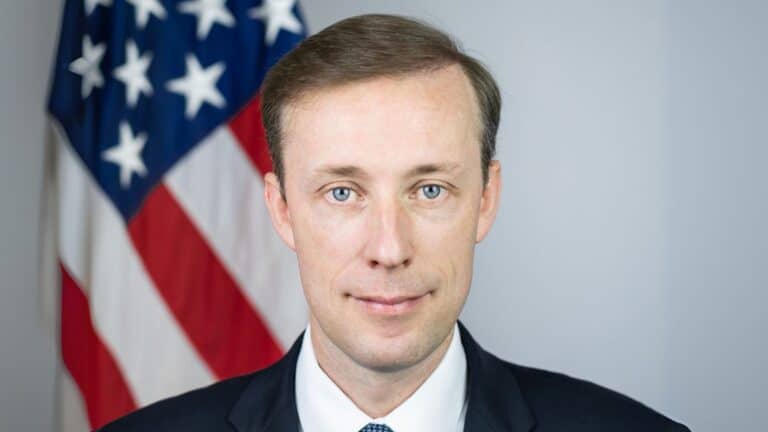
Trade War Turbulence and Clean Energy
It’s hard to overstate how consequential President Trump’s “Liberation Day” tariffs have been for American economic policy. While the administration has paused the steep reciprocal tariffs it announced...
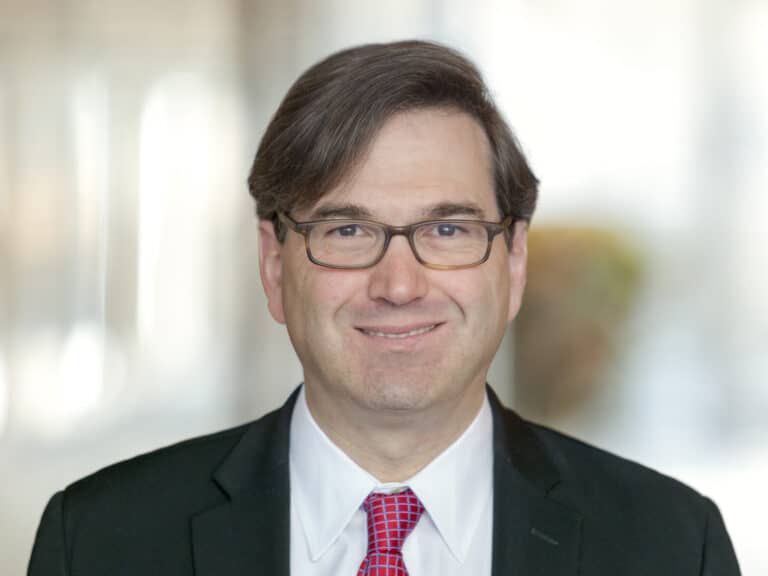
Front Lines of the Energy Transition
In energy policy circles, the word “resilience” often refers to future-proof systems or infrastructure designed for the transition away from fossil fuels. But resilience means something different to...
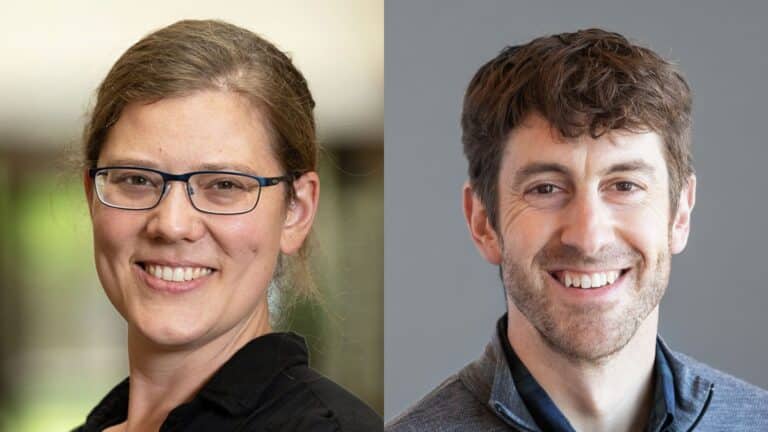
Europe’s Energy Trilemma
The European Union’s energy landscape is transforming rapidly, as the bloc works to reduce emissions, lower energy prices, and decrease dependence on Russian fuel—three goals proving to be...
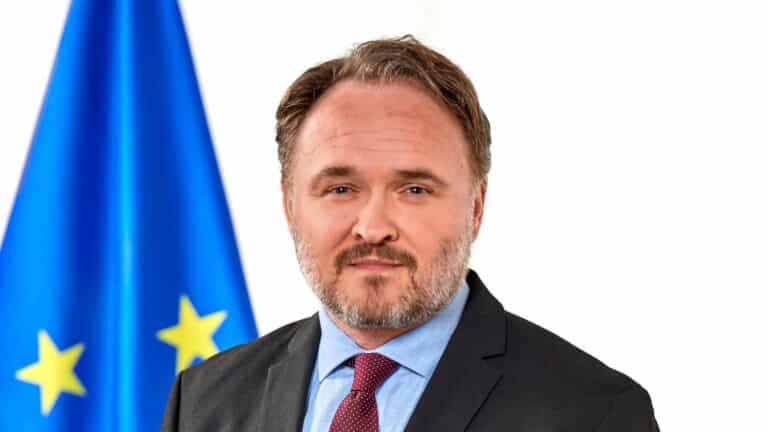
Relevant
Publications
The Potential Contribution of Enhanced Geothermal Systems to Future Power Supply: Roundtable Summary

Can AI Transform the Power Sector?
This Energy Explained post represents the research and views of the author. It does not necessarily represent the views of the Center on Global Energy Policy. The piece...
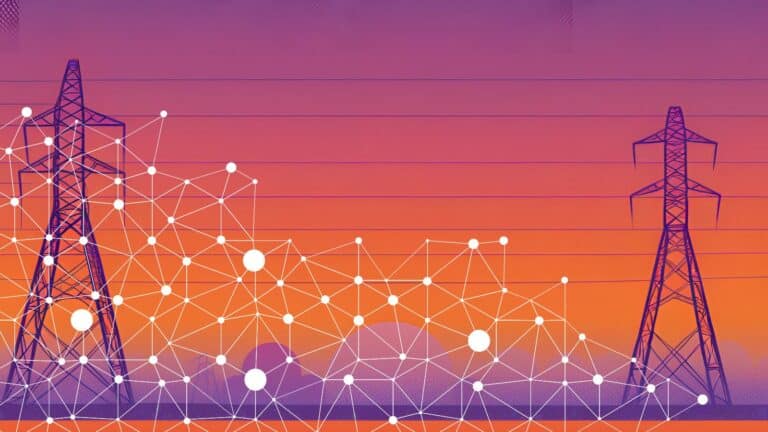
Insights from the US and India for Electricity Open Access in Kenya and South Africa
Kenya and South Africa have recently started moving toward an open access regime in their electricity sectors, while the US and India have been on this path for over two decades.

Addressing Energy Insecurity via Utility Ratemaking
About one in four American households experience some form of energy insecurity. Within this group, Black, Indigenous, Latine, low- and moderate-income (LMI), and other disadvantaged communities face a disproportionately higher burden.


